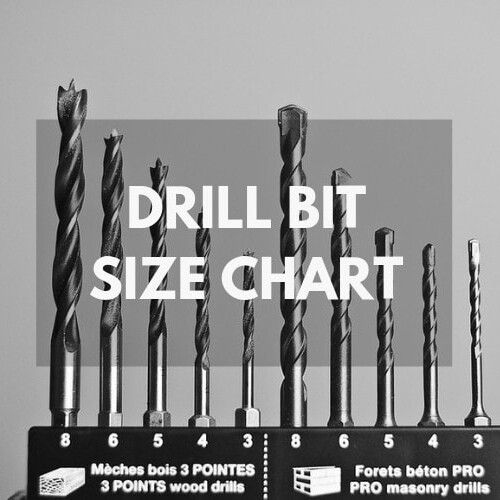

Includes practically every conversion you’ll ever need.There’s also recommended tap sizes for unified and metric threads, recommended diameters for pipe taps, and a handy list of formulas for doing your own conversions. This chart provides conversions for standard bits to their decimal conversions, numbered bits to their decimal conversions, and metric bits to their decimal conversions. This chart is a must for any shop, as it has literally everything you could ever need to know, in one convenient place. Each of these gauges will provide you everything you need to do conversions on the spot. Rather than send you to the store armed with nothing but the cash in your pocket, we’ve taken a look at tons of different size charts and bit gauges for you to choose from.
#Drill bit sizes series#
These handy gauges are worth their weight in gold, and most of them will fit in your pocket or wallet.īit gauges are made from either plastic or metal and feature a series of holes that correspond to different bit sizes, along with their standard size, and metric conversions. Or, you could save yourself time by referring to a bit gauge when it’s time to convert. Sure, you could sit there doing the math anytime you need to make a conversion. For conversions from inches to millimeters: multiply the number by 25.4.For conversions from millimeters to inches: multiply the number by.If you’re interested in doing bit conversions yourself, all you’ll need is a calculator and these formulas: Or, if you prefer to avoid doing math altogether, a pocket bit gauge is worth its weight in gold. If you’re a regular Einstein, you can do the math yourself. So, what do you do when you need to make conversions from standard to metric? There are two different ways to tackle this issue. You’re regularly going to encounter fasteners or hole sizes that are sized metrically, usually in millimeters. Just because your drill bits are sized in fractions doesn’t mean the rest of the world is. So far, everything has been relatively straightforward and easy to understand. Most standard screws are sized by number, from 1-12, and each of those numbers corresponds to a different drill bit size. Matching Bits to Screwsįor new construction, it’s essential to know which drill bit corresponds to which screw size. However, if you have bits in these sizes, you’re well on your way to having every drill bit you’ll ever need. Keep in mind that there are hundreds of more bits beyond the ones that we’ve covered here. Here are the most common sizes for a standard (fractional) bit set: 1/16 As a rule of thumb, any set that contains 20 or more bits should be more than enough for most craftsmen.

Of course, some bits have specialized applications and aren’t relevant for most basic work around the house.Ī typical set of drill bits includes somewhere between 12 and 30 bits. The four-column chart below is a handy cross-reference for drill bit sizes.Maybe a better question would be how much time you have!Īll kidding aside, when it comes to drill bits, there’s a seemingly endless array of different sizes. Metric drill let's typically just used the actual measurement. Sizes on imperial drill kits are typically referenced by numbers or letters. Depending on hole size, the feature may be pocket-milled with an endmill versus drilling.

Holes outside of this range may require specialized tooling. The reference chart below helps understand what is considered a standard drill bit, starting from smallest to largest. When designing drilled holes it is best practice to try to match standard drill sizes.


 0 kommentar(er)
0 kommentar(er)
